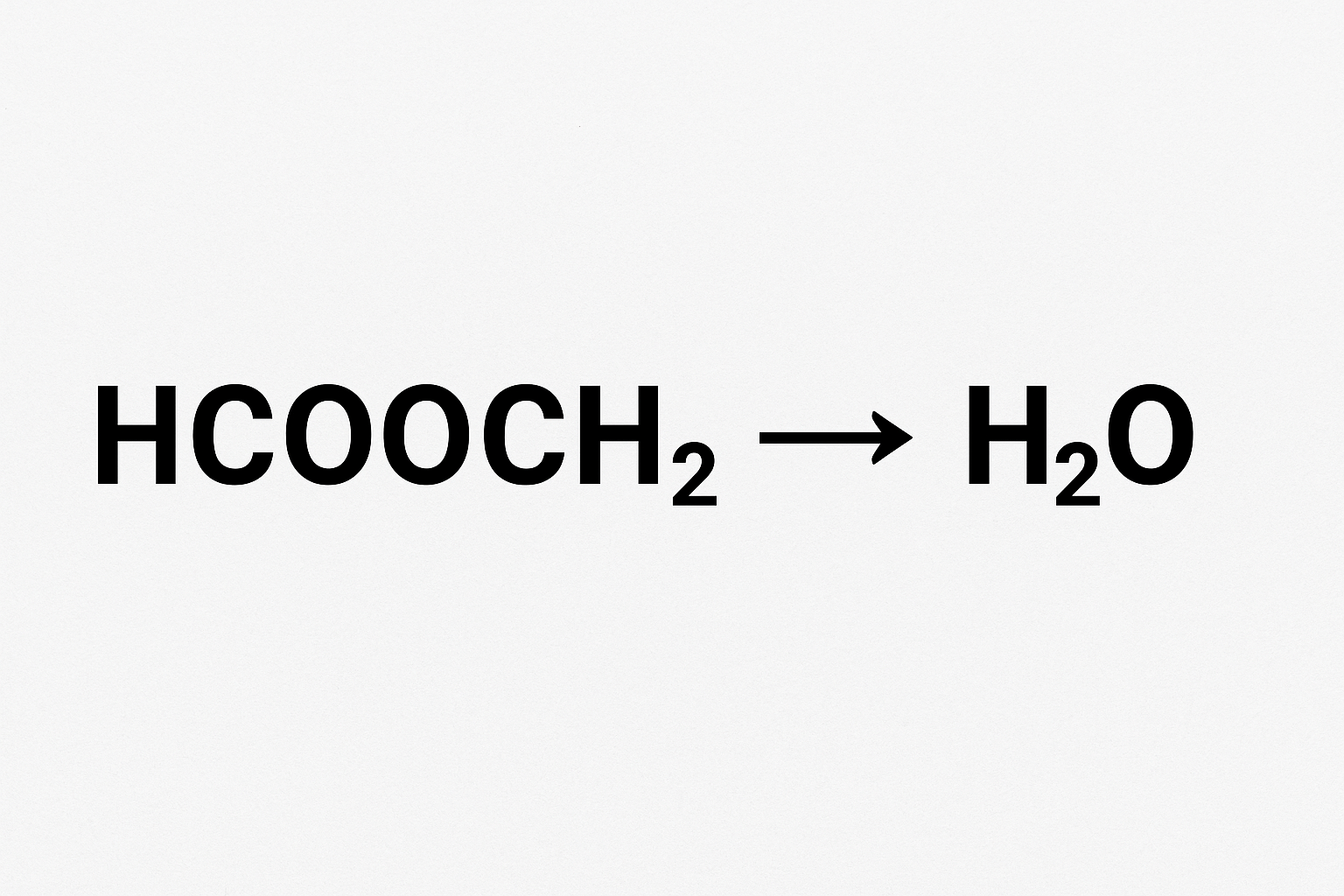Have you ever heard someone say “hcooch ch2 h2o” and thought—uh, what? It kinda sounds like a magic spell, right? But don’t worry! I’m gonna explain it like we’re best buddies having juice on the porch. So sit tight, grab your favorite snack, and let’s explore what hcooch ch2 h2o is all about. It might sound tricky, but it’s actually really cool once you understand it. And yes, we’ll talk about hcooch ch2 h2o a LOT—because it’s our star of the show!
Let me take you back to a fun moment in chemistry class. We were mixing stuff—like little wizards in white coats—and suddenly, BOOM! A tiny bubble appeared, and my friend yelled, “It’s magic!” But no, it was just a mix of molecules like hcooch ch2 h2o doing their thing. Back then, I had no clue what they meant. Now, I do—and I’ll explain it to you the same way I wish someone explained it to me: in plain, cozy, peanut-butter-and-jelly language.
Okay, let’s start simple. HCOOH is called formic acid. That’s the “hcooch” part. CH2? That’s just two hydrogens and a carbon, kind of like a tiny Lego piece in chemistry. And H2O? You already know that one—it’s water! So when we say hcooch ch2 h2o, we’re really talking about a chemical situation where these three parts come together. It’s like the dream team of chemistry. What do they do? They react! They create something new, like when flour, eggs, and sugar make a cake.
Now, here’s the fun twist: when hcooch ch2 h2o come together, something called esterification can happen. That’s a big word for a simple thing—it means we can make esters. Esters are the molecules that make stuff smell super yummy, like bananas or strawberries. So when we mix formic acid (hcooch) and an alcohol part (which might be connected to ch2), with h2o in the background, it’s like building blocks coming together to form something totally new. Isn’t that neat?
So yeah, every time you hear hcooch ch2 h2o, imagine a tiny kitchen where molecules are baking up something new. It’s not magic—but it sure feels like it!
When You Mix hcooch ch2 h2o, Something New Is Born—and It’s All About Chemistry Fun
Okay, okay, I know what you’re thinking. “Wait, I’m still kinda confused!” That’s totally fine! Let’s go over this again, just a bit differently. When we say hcooch ch2 h2o, we’re looking at a story of molecules. These aren’t just random letters. They’re ingredients, like flour or milk. And when you mix them the right way, boom—you get something totally brand new.
Let’s look at hcooch, which again is formic acid. It’s kinda sharp and stingy—ants use it when they bite you (ouch!). Then there’s ch2, a little carbon friend with two hydrogens. This piece is part of bigger molecules, kind of like a puzzle piece. And then h2o—good ol’ water. Water is like the oven—it helps the reaction cook.
So when you add hcooch ch2 h2o in a test tube or beaker, you might get an ester. Esters are like the scents in perfumes or the flavors in candy. They’re sweet-smelling molecules. Isn’t it wild how something that sounds like a robot’s password—hcooch ch2 h2o—can turn into something that smells like pineapple?
I remember once in the lab, we mixed some formic acid with alcohol (the kind you don’t drink!), and then added some water. It smelled like apples! No joke. That’s the power of hcooch ch2 h2o. It’s like mixing invisible Lego pieces and getting a surprise toy at the end. Chemistry is full of surprises—and now you’re in on the fun.
Why hcooch ch2 h2o Are Actually a Super Cool Chemical Combo You’ll Want to Remember
So here’s the deal—once you really understand hcooch ch2 h2o, you’ll start seeing chemistry in everyday stuff. Like, you’ll sniff a fruity gum and think, “Huh, I bet an ester made that.” Or when you see ants crawling around, you’ll go, “Those tiny guys are full of formic acid—aka hcooch!”
Let’s imagine these molecules as friends at a party. HCOOH walks in with a sharp attitude (it’s acidic, after all). CH2 shows up and says, “Hey, I’ve got energy to bond!” And H2O? They’re just vibing, keeping things fluid (literally). When they all interact, reactions happen. It’s like a dance floor with molecular moves.
And get this—when you understand these basics, you’re not just memorizing stuff. You’re actually seeing chemistry come alive. You’re turning words like hcooch ch2 h2o into real things you can imagine and feel. That’s way cooler than just reading a boring textbook, right?
So keep this in mind: every time you come across hcooch ch2 h2o, think of it as a magical trio of science, teamwork, and creation. You’re not just learning—you’re becoming a molecule whisperer!
The Reaction Between hcooch ch2 h2o Might Be Tiny but It’s Full of Big Science
Okay, now that we’ve had some fun imagining molecules at parties and baking in invisible kitchens, let’s talk a teensy bit more about what really happens during the reaction. When hcooch ch2 h2o come together, a chemical change can occur. It’s not just mixing like paint—it’s like taking Lego pieces, snapping them together, and getting something you didn’t expect.
Formic acid (hcooch) is the acid player. When it reacts with an alcohol group—like something with a ch2—they can link up. But wait, they don’t just stick together randomly. The h2o, which is water, often comes out of the mix. It’s kinda like someone stepping aside to let two friends dance together better.
This process is called condensation, and the water that’s produced is kind of like a byproduct—it’s what gets left behind when the new bond is made. Cool, right? You start with hcooch ch2 h2o, and you end up with an ester and some water going “see ya later!”
So if you’re thinking this is still over your head, just imagine glue and paper. You apply the glue (hcooch), press two pieces (ch2) together, and the squishy bit that comes out (h2o) is just part of the mess. But in chemistry—it’s a beautiful mess!
Mixing hcooch ch2 h2o Is Kind of Like Making Scented Slime for Science Nerds
Okay, last time I made slime with my little cousin, we added glue, glitter, and water. And we ended up with a stretchy, sparkly mess that smelled like bubblegum. Making esters with hcooch ch2 h2o is kinda the same! You just swap out glitter for chemistry magic.
See, when you mix formic acid (hcooch) with something that has a ch2 piece—like an alcohol—you’re setting up the perfect slime recipe in chemistry land. Then water (h2o) either helps the mix or steps aside while something sweet-smelling forms.
You’re still not using heat and colors like in real slime, but the process is kinda squishy too. Bonds are made, molecules stretch and connect, and the end product is something cool and useful—like perfume or flavoring. So next time you make actual slime, think of hcooch ch2 h2o and how even chemists like to get messy in the lab.
Conclusion: What We Learned About hcooch ch2 h2o and Why It’s Surprisingly Awesome
Whew! That was a ride, wasn’t it? We talked about ants, perfume, slime, parties, and more—and all thanks to three simple players: hcooch ch2 h2o. They might seem like just letters and numbers, but now you know they tell a story.
You learned that hcooch stands for formic acid, ch2 is part of many molecules that help things bond, and h2o is water, which can either join the fun or step aside. Together, they make reactions happen, especially to form esters—which make the world smell and taste way better.
So the next time someone says “chemistry is boring,” you can just smile and say, “Not if you know what hcooch ch2 h2o can do!”
FAQ: Quick Questions About hcooch ch2 h2o (And Super Simple Answers!)
Q1: What does hcooch ch2 h2o even mean?
It’s a mix of chemicals—formic acid (hcooch), a carbon-hydrogen group (ch2), and water (h2o). Together, they react and make new stuff!
Q2: Is hcooch ch2 h2o dangerous?
Alone, formic acid can sting (like an ant bite!), but in small, controlled amounts—especially in labs—they’re safe and fun to experiment with.
Q3: What do hcooch ch2 h2o make together?
They can make esters, which are chemicals used in fruity flavors and perfumes. They smell super nice!
Q4: Can I try mixing hcooch ch2 h2o at home?
Not really—this stuff is best left for science labs with safety tools. But you can imagine it while playing with safe experiments!
Q5: Why should I care about hcooch ch2 h2o?
Because they’re everywhere in life—from the bite of an ant to the smell of your gum. Knowing about them is like unlocking nature’s secrets!
Please check my website link.











